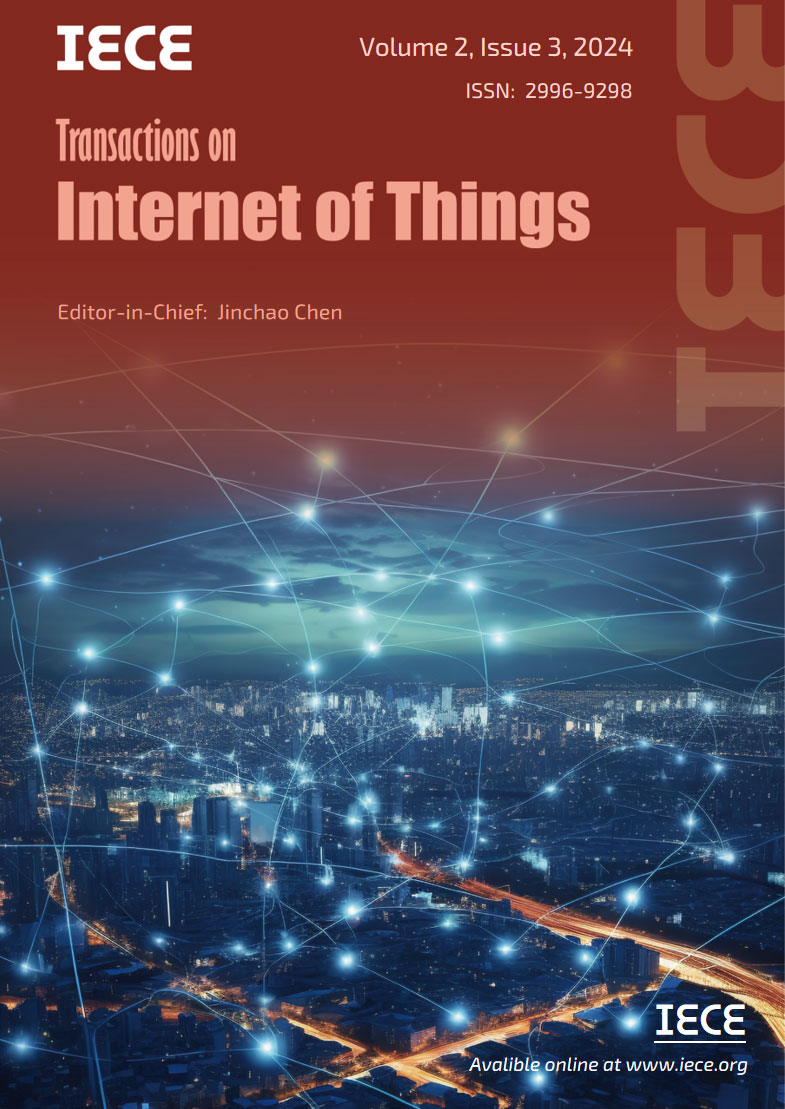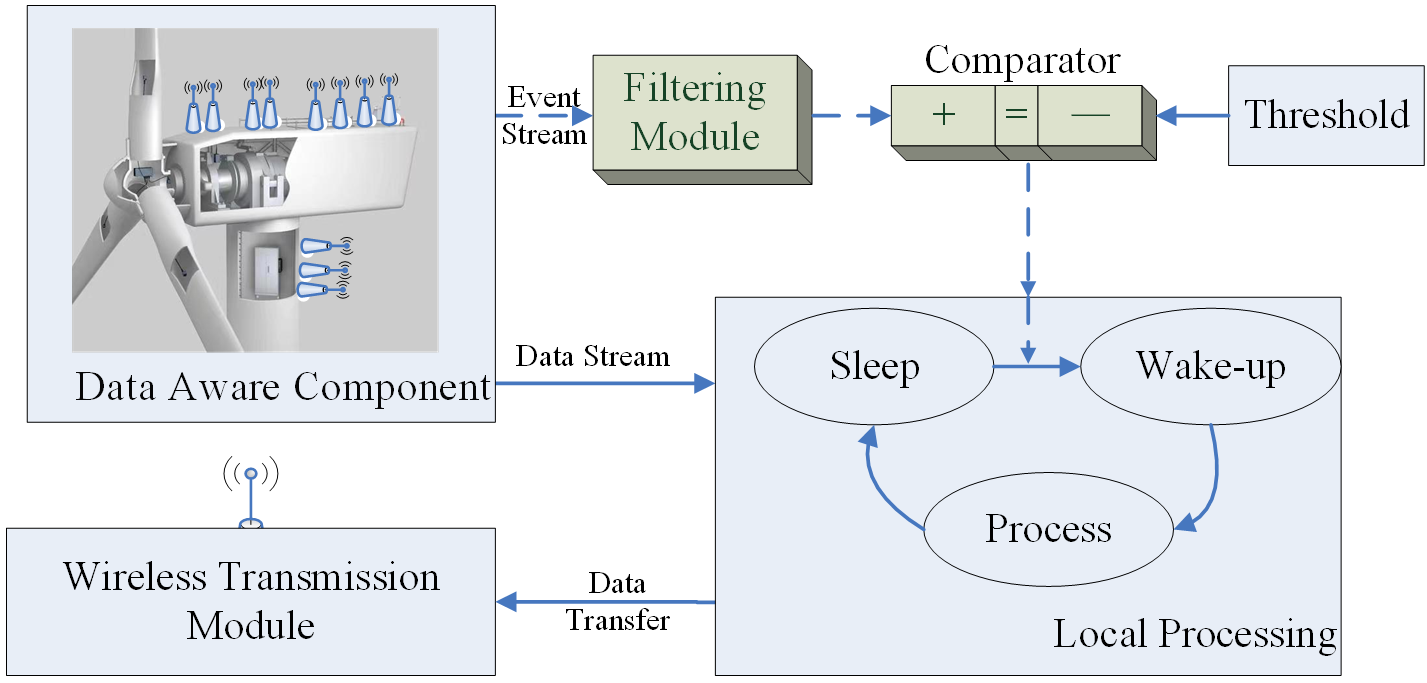Abstract
Monitoring the health condition of wind turbines is crucial to ensure the safety and efficient operation of wind farms. Wireless sensor networks (WSNs) provide an economical and effective solution for such monitoring. However, when sensors detect faults in wind turbines, traditional WSN routing protocols often lead to redundant data transmission, resulting in energy waste. To address this issue, an event-triggered energy-efficient wireless routing protocol (EEWRP) is proposed specifically in this paper for wind turbine fault monitoring. The protocol improves the distributed energy-efficient clustering algorithm (DEEC) by first identifying the type of event and then using an adaptive dynamic sliding window method to determine the event-triggered combination threshold. The system only wakes up nodes and triggers data transmission in the case of abnormal conditions, effectively reducing data traffic and lowering network energy consumption. Simulation experiments show that the network lifetime of the EEWRP algorithm is increased by about 80% and 20% compared to the low-energy adaptive clustering hierarchy (LEACH) and DEEC algorithms, respectively, and the data transmission volume is about 8.74 times and 1.07 times that of the LEACH and DEEC algorithms, respectively. The EEWRP algorithm can effectively reduce the energy consumption, extend the network lifetime, and enhance the capability of data packet transmission.
Keywords
Wind turbine
Fault monitoring
Wireless sensor network
Event-triggered mechanism
Funding
The project is supported by the Zhanjiang Non-Funded Science and Technology Tackling Key Problems Project, with project number 2022B01160.
Cite This Article
APA Style
Li, Y., Xu, P., Chen, W. & Zhang, H. (2024). An Event-Triggered Energy-Efficient Wireless Routing Protocol for Fault Monitoring of Wind Turbines. IECE Transactions on Internet of Things, 2(3), 55–62. https://doi.org/10.62762/TIOT.2024.257019
Publisher's Note
IECE stays neutral with regard to jurisdictional claims in published maps and institutional affiliations.
Rights and permissions
Institute of Emerging and Computer Engineers (IECE) or its licensor (e.g. a society or other partner) holds exclusive rights to this article under a publishing agreement with the author(s) or other rightsholder(s); author self-archiving of the accepted manuscript version of this article is solely governed by the terms of such publishing agreement and applicable law.


 Submit Manuscript
Edit a Special Issue
Submit Manuscript
Edit a Special Issue

